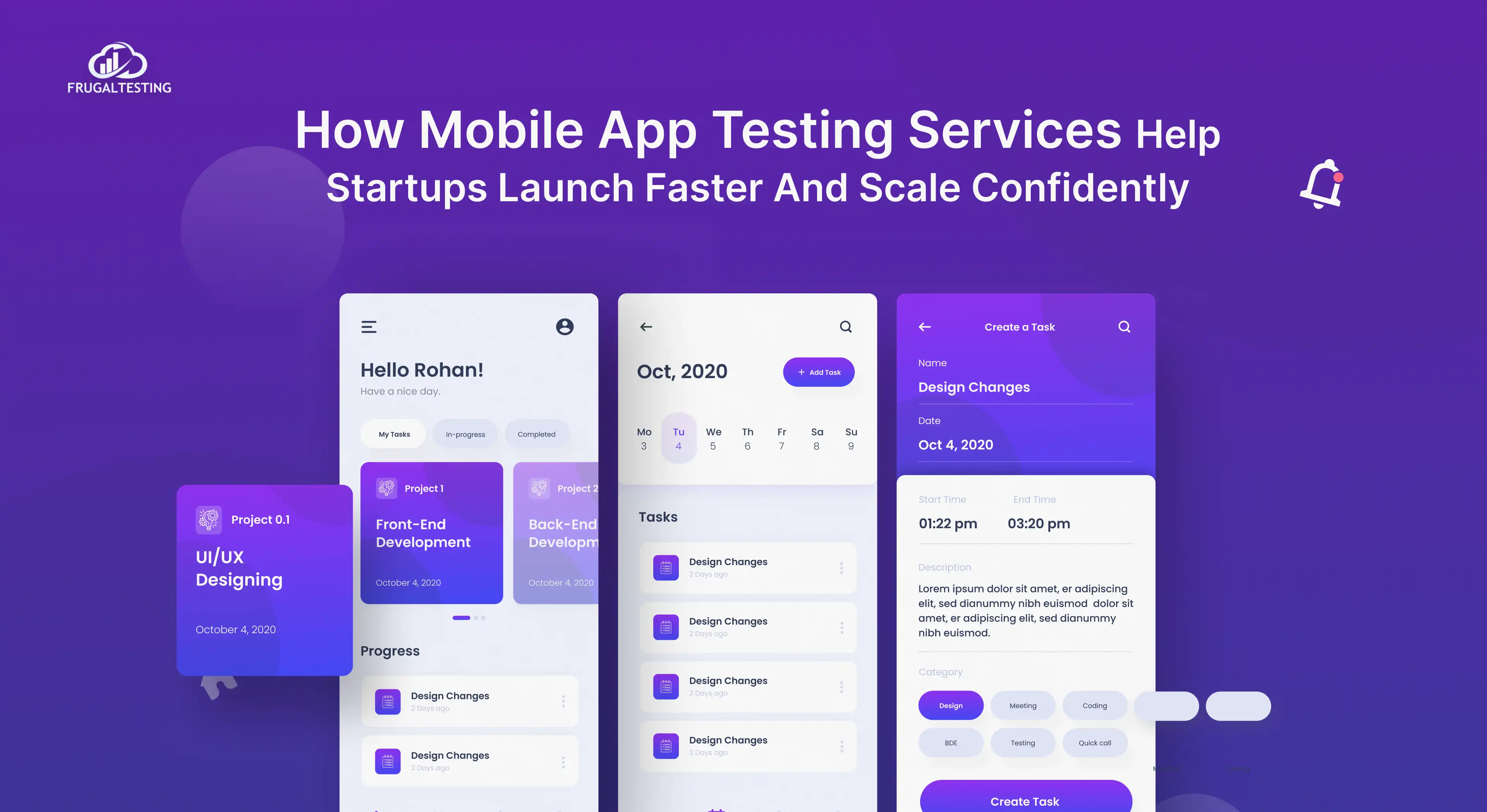The Uber app handles millions of ride-hailing services daily, especially during peak hours and big events, and festivals. To manage sudden spikes in ride demand data, Uber uses stress testing tools, load testing software, and performance testing website techniques. By simulating high waiting times and rider-to-driver demand with k6 load testing and JMeter load testing, the platform ensures smooth Uber login, accurate fare estimates, and a reliable pickup experience for every Uber ride.
To optimize scalability, the ride-matching system leverages machine learning algorithms, AI-driven systems, and advanced matching technology such as the Hungarian Algorithm and bipartite matching graph. With route optimization, GPS tracking, and real-time updates, the Uber driver network maintains high driver efficiency, fair surge pricing, and a seamless customer experience across global ride-sharing platforms.
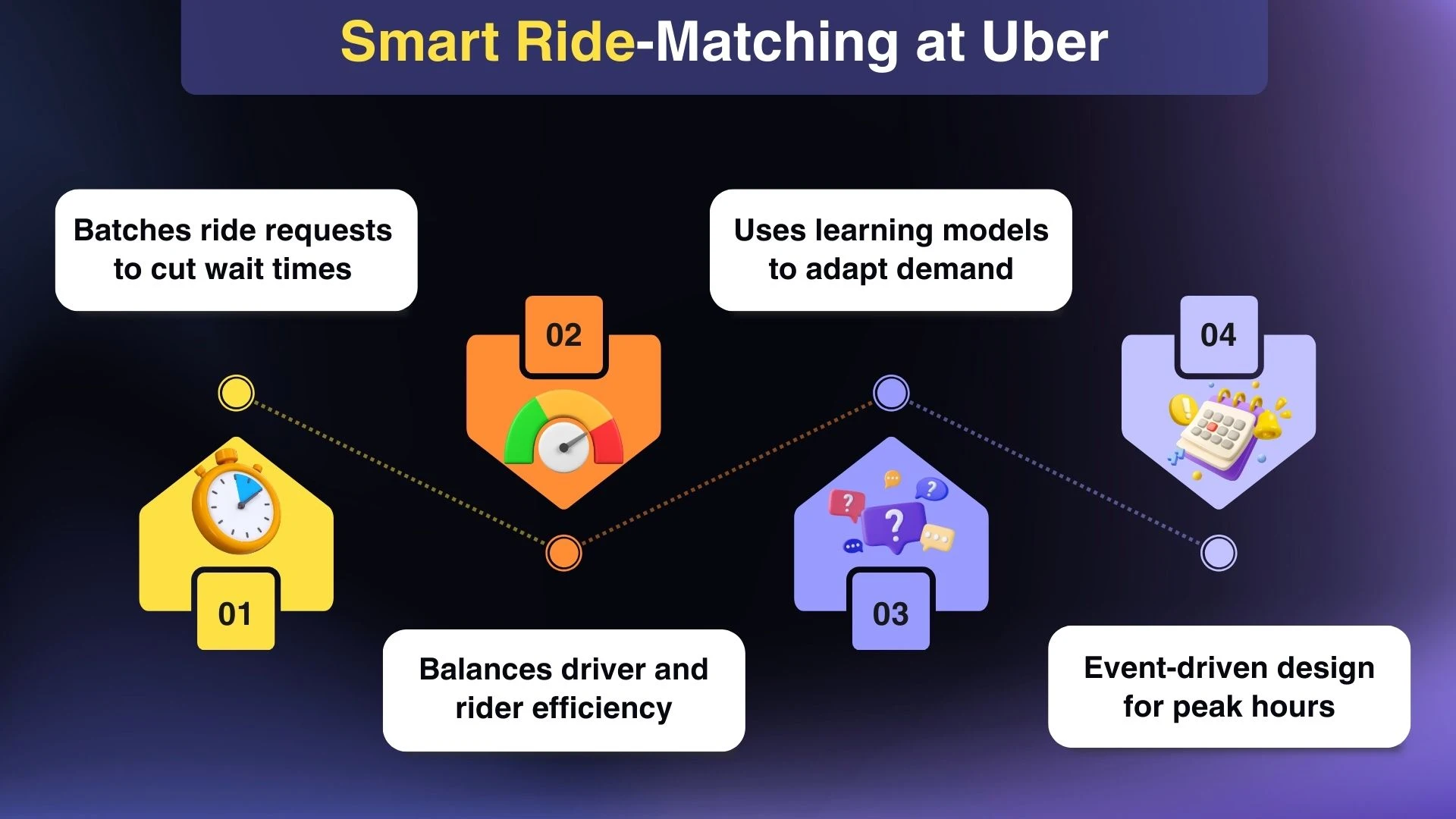
💡 What’s covered in this guide:
- Ride-Matching System: How the Uber app uses AI matching, shortest path algorithms, and GPS data to connect riders with nearby drivers.
- Peak vs Off-Peak: Differences in algorithms and dynamic pricing during high and low-demand periods.
- Stress Testing Tools: Hailstorm, uDestroy, Shadower, and Ballast ensure system reliability under heavy load.
- Benefits & Challenges: Stress testing improves driver efficiency and reduces waiting times while addressing algorithm complexity.
- Future-Proofing: Automated QA testing and CI/CD pipelines maintain a seamless rider experience globally.
Introduction to Uber’s Ride-Matching System
The Uber ride-matching system powers millions of trips across global ride-hailing services, including Uber Eats and Uber Assist. By combining AI matching, machine learning algorithms, and geospatial indexes, the platform ensures that every pick-up location is assigned to the nearest Uber driver with high driver efficiency.

Key Points of the Matching System
- Algorithmic Foundation: Uber leverages bipartite graphs, the Hungarian Algorithm, and batch matching to pair riders and drivers in real-time.
- Data-Driven Optimization: With GPS data, geo-location coordinates, and heat maps, Uber reduces waiting times during after-work rush hour or big events and festivals.
- Scalability and Reliability: Using microservices architecture, redundancy and replication, and distributed computing, the marketplace engine scales globally, from UK trips to dense cities like New York and Bangalore.
- Customer-Centric Design: Features like upfront pricing, an integrated payment system, and a responsive app interface improve the customer experience and user outcomes.
What Happens During Peak Hours on Uber
During peak hours, the Uber app experiences a surge in ride demand data, especially in metro cities like New York, London, and Bangalore. The ride-matching system must handle high rider-to-driver ratios while ensuring that every Uber ride gets the fastest pick-up location assignment.
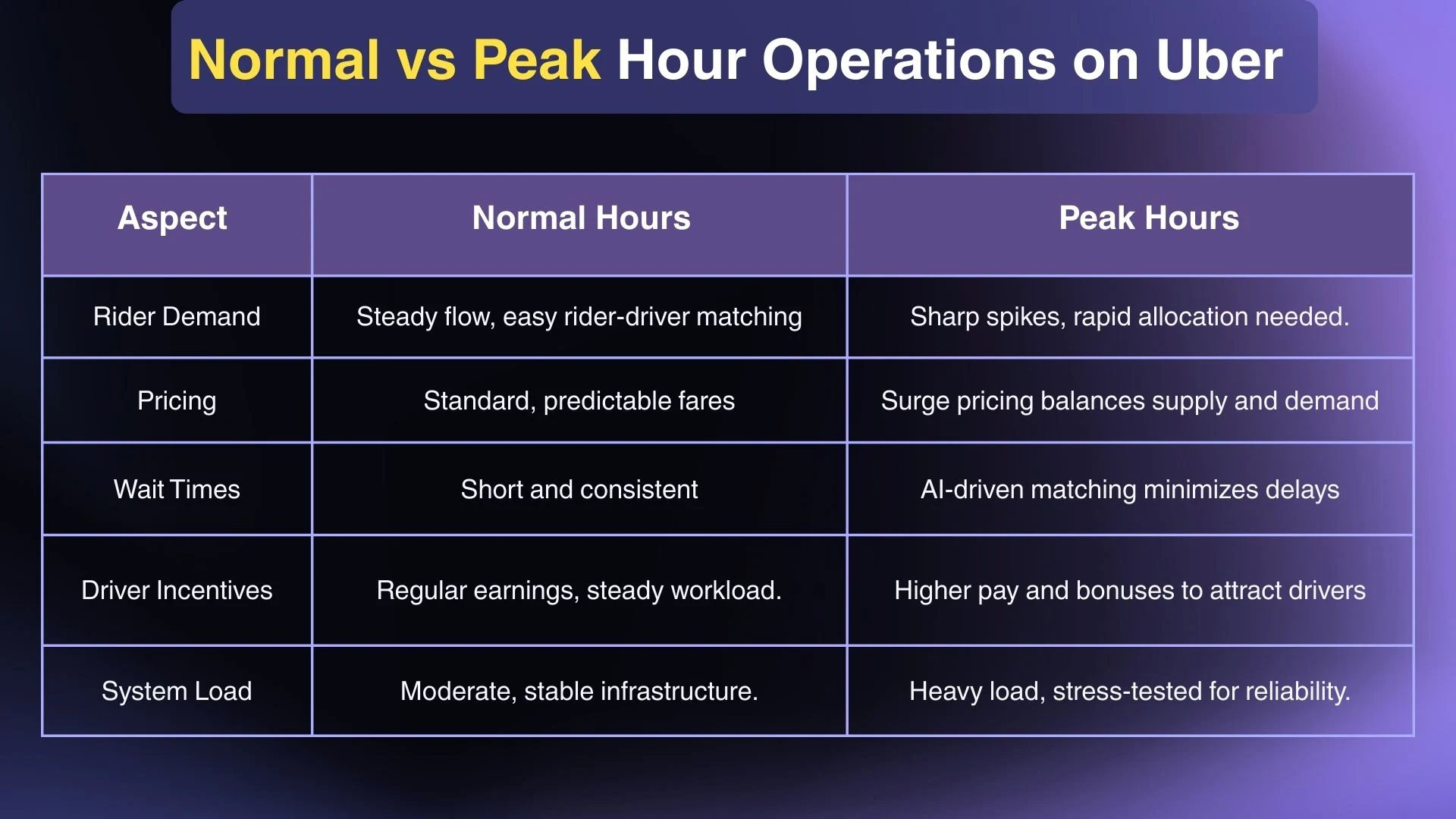
To balance supply and demand, Uber uses dynamic pricing algorithms, surge pricing models, and AI-driven systems that adjust rider fares in real-time. By applying machine learning and geo-location coordinates, the platform minimizes waiting times, improves driver incentives, and maintains a seamless customer experience even during after-work rush hour or big events and festivals.
Uber also relies on scalability testing, application performance testing, and failover mechanisms to avoid disruptions. With GPS tracking, real-time marketplace updates, and distributed computing, the Uber driver network stays efficient, ensuring stable ride-hailing services and reliable on-demand mobility solutions worldwide.
Why Stress Testing Is Important for Uber
The Uber app operates as a global ride-hailing service, handling millions of Uber rides, UK trips, and on-demand mobility solutions daily. During peak hours or big events, sudden spikes in ride demand data can overwhelm the ride-matching system. This makes stress testing software and performance testing tools critical for reliability.
Key Reasons Stress Testing Matters
- System Reliability: With website stress testing and application performance testing, Uber prevents failures in its microservices architecture and ensures seamless Uber login.
- Customer Experience: Stress testing secures a smooth app interface, accurate fare estimates, and low waiting times, improving user outcomes.
- Business Continuity: By testing failover mechanisms, distributed computing, and redundancy and replication, Uber guarantees uninterrupted ride-sharing platform performance worldwide.
Differences Between Peak and Off-Peak Ride-Matching Algorithms
The Uber ride-matching system adapts its algorithms based on rider-to-driver demand across global ride-sharing platforms. During peak hours, the Uber app leverages machine learning algorithms, AI matching, and dynamic pricing models to optimize rider fares and reduce waiting times. In contrast, off-peak scenarios focus more on maintaining driver efficiency, customer experience, and balanced Uber ride allocation.
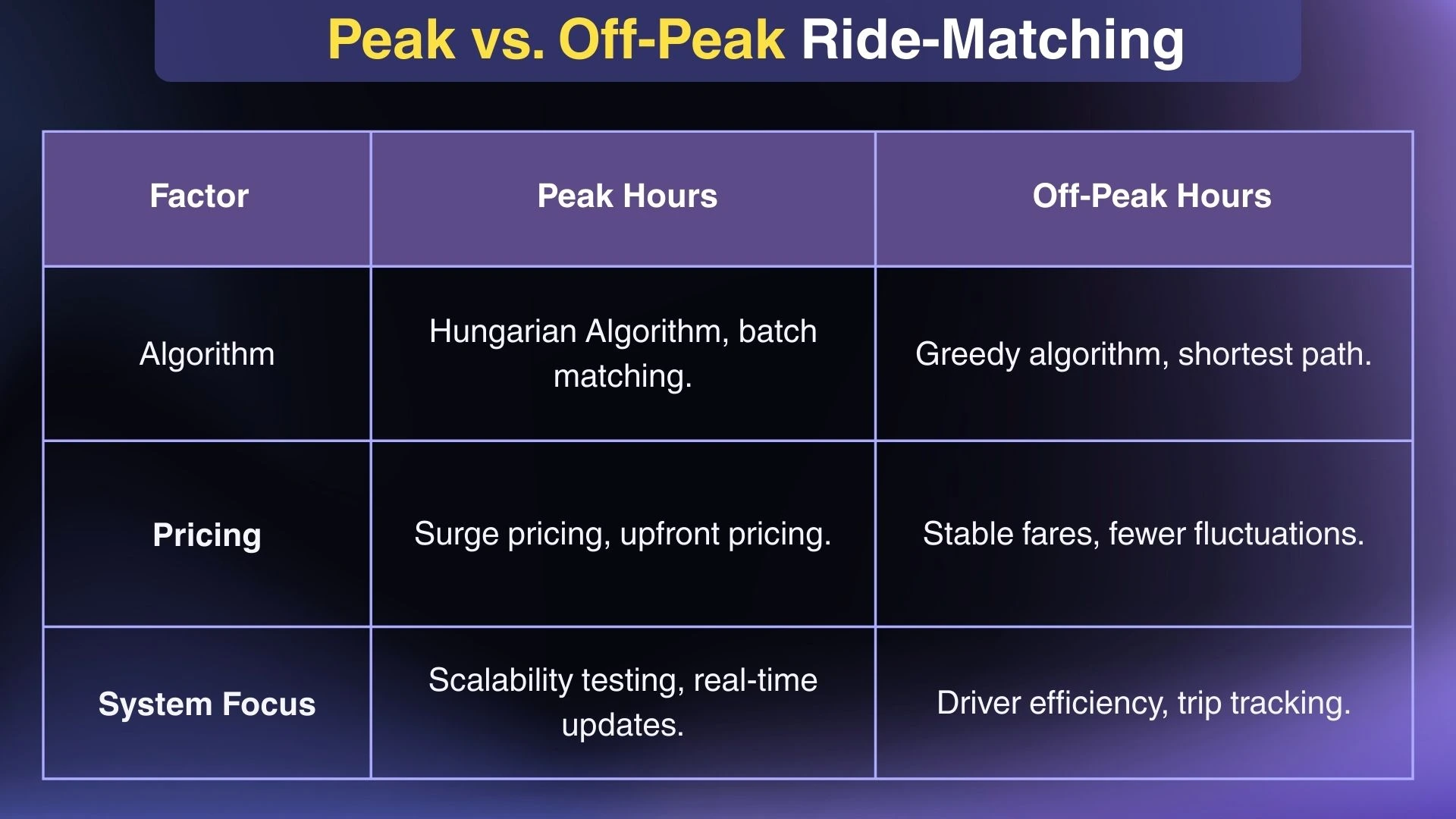
By applying software performance testing and distributed computing, Uber ensures consistent service across both high-demand and low-demand conditions worldwide.
Tools and Techniques Uber Uses for Stress Testing
Uber manages millions of ride requests per second, so stress testing software and load testing tools are critical for the Uber app. To keep the ride-matching system resilient during peak hours in global cities like New York, London, and Bangalore, Uber has developed internal frameworks and stress testing methods.
Tools Uber Uses
- Hailstorm: Simulates peak traffic during off-peak times to validate scalability. (Source)
- uDestroy: A resilience-testing framework that simulates faults to confirm the system’s failover capability.
- Shadower & Ballast: Capture live traffic, replay requests, and scale load testing dynamically with BPF and PID controllers. (Source)
Inferred Techniques from Uber’s Practices
- Scalability testing: Implied by Ballast’s adaptive request scaling.
- Application performance testing: Suggested by Uber’s focus on response times and reliability in Ballast.
- Failover mechanisms & resilience testing: Evident in uDestroy’s chaos engineering approach.
- Automated testing in CI/CD pipelines: Inferred from Uber’s microservices architecture and distributed computing models.
By combining these tools with proven testing practices, Uber maintains reliable ride-hailing services and a seamless customer experience worldwide.
Key Benefits of Stress Testing Uber’s Algorithm
Uber’s ride-matching system powers millions of trips worldwide, from Uber Requirements in New York to UK trips and on-demand mobility solutions in Bangalore. By applying advanced stress testing tools, Uber validates not only scalability but also long-term product strategy for its global ride-hailing services.
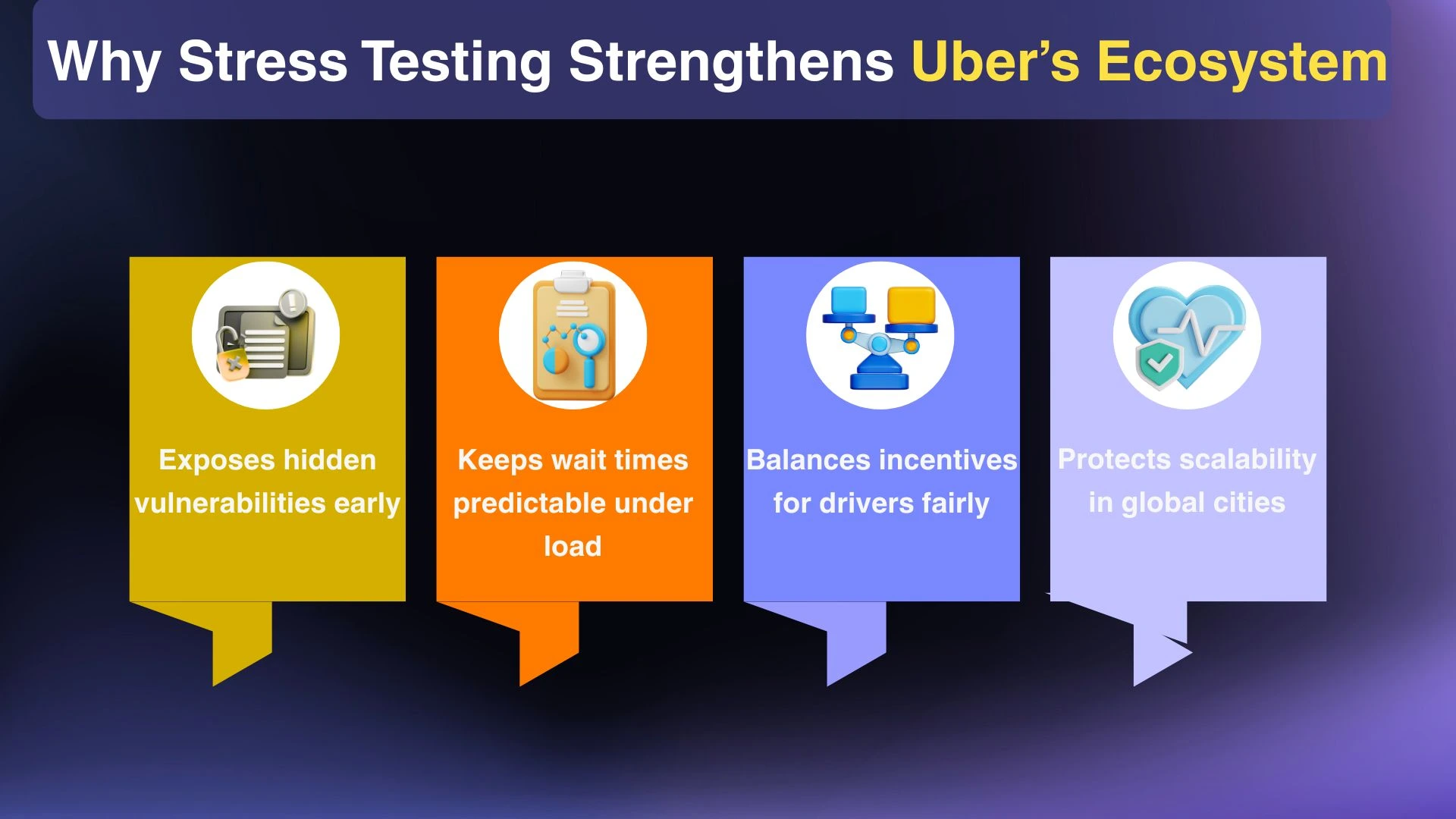
Key Benefits of Stress Testing
- Enhanced Route Optimization: By validating algorithms such as the bipartite graph and batch matching, Uber improves the accuracy of assigning the best pick-up location.
- Improved Data Quality: Stress testing highlights weaknesses in geo-location coordinates, trip tracking, and location updates, ensuring reliable GPS data.
- Fair Driver Pay & Incentives: Testing supports a better balance of driver incentives, variable costs, and take rate, strengthening the overall marketplace engine.
- Resilient Notification Service: Integrating Firebase Cloud Messaging under high load ensures riders receive real-time updates during after-work rush hour and big events, and festivals.
Challenges Uber Faces in Stress Testing
Stress testing at the scale of the Uber app is complex, especially when the Uber driver network and millions of Uber login sessions must remain uninterrupted during global demand spikes. To keep ride-hailing services reliable across New York, London, and Bangalore, Uber encounters several challenges in its software testing services and software performance testing workflows.
Key Challenges
- Complex Algorithms: Testing advanced models like Dijkstra’s algorithm and BFS algorithm at scale is resource-intensive.
- Load Variability: Managing unpredictable surges in traffic requires adaptive load testing tools.
- Penetration Risks: Securing systems under pressure calls for robust penetration testing software.
- Automation Gaps: Scaling with precision demands reliable automated testing software.
- Geo Optimization: Balancing efficiency across diverse regions complicates application performance testing.
By addressing these challenges, Uber strengthens its ride-matching system and ensures global ride-sharing platforms remain dependable.
Conclusion: Building a Reliable Ride-Matching System
Uber’s ability to deliver a seamless ride-hailing service relies on strong system design, advanced software performance testing, and efficient ride-matching algorithms. By ensuring the Uber app scales under peak loads, the platform minimizes failures and enhances the overall pickup experience for millions of daily users.
Through continuous scalability testing and improvements in application performance testing, Uber creates a balance between user demand and Uber driver availability. This commitment not only reduces wait times but also strengthens trust in the Uber ride ecosystem. With ongoing innovation, real-time monitoring, and adaptive infrastructure, Uber proves that a reliable ride-matching system is key to shaping the future of on-demand mobility solutions worldwide.
Frugal Testing has become a trusted software testing company known for delivering end-to-end quality solutions. By offering specialized QA testing services for enterprises, the frugal testing company ensures reliable results across industries. With strong expertise in functional testing services and modern AI-driven test automation services, it helps businesses achieve scalability, efficiency, and cost savings while maintaining high software performance.
People Also Ask
1. What kind of real-time data does Uber analyze to match riders with the closest drivers?
Uber analyzes GPS data, geo-location coordinates, and ride demand data to ensure accurate rider-to-driver matching in real time.
2. How does Uber optimize routes using rider and driver data?
Uber uses machine learning algorithms and route optimization techniques to reduce wait times and improve the overall pickup experience.
3. What automated testing frameworks are used to test Uber’s ride-matching system?
Uber relies on automated testing software and load testing tools like JMeter and k6 to validate scalability and performance.
4. What role does A/B testing play in improving Uber’s algorithm efficiency?
A/B testing software helps Uber evaluate changes in its ride-matching system, ensuring better driver efficiency and rider outcomes.
5. What machine learning models does Uber use to forecast ride demand?
Uber applies AI-driven systems and predictive machine learning models to forecast ride demand data during peak hours and big events.



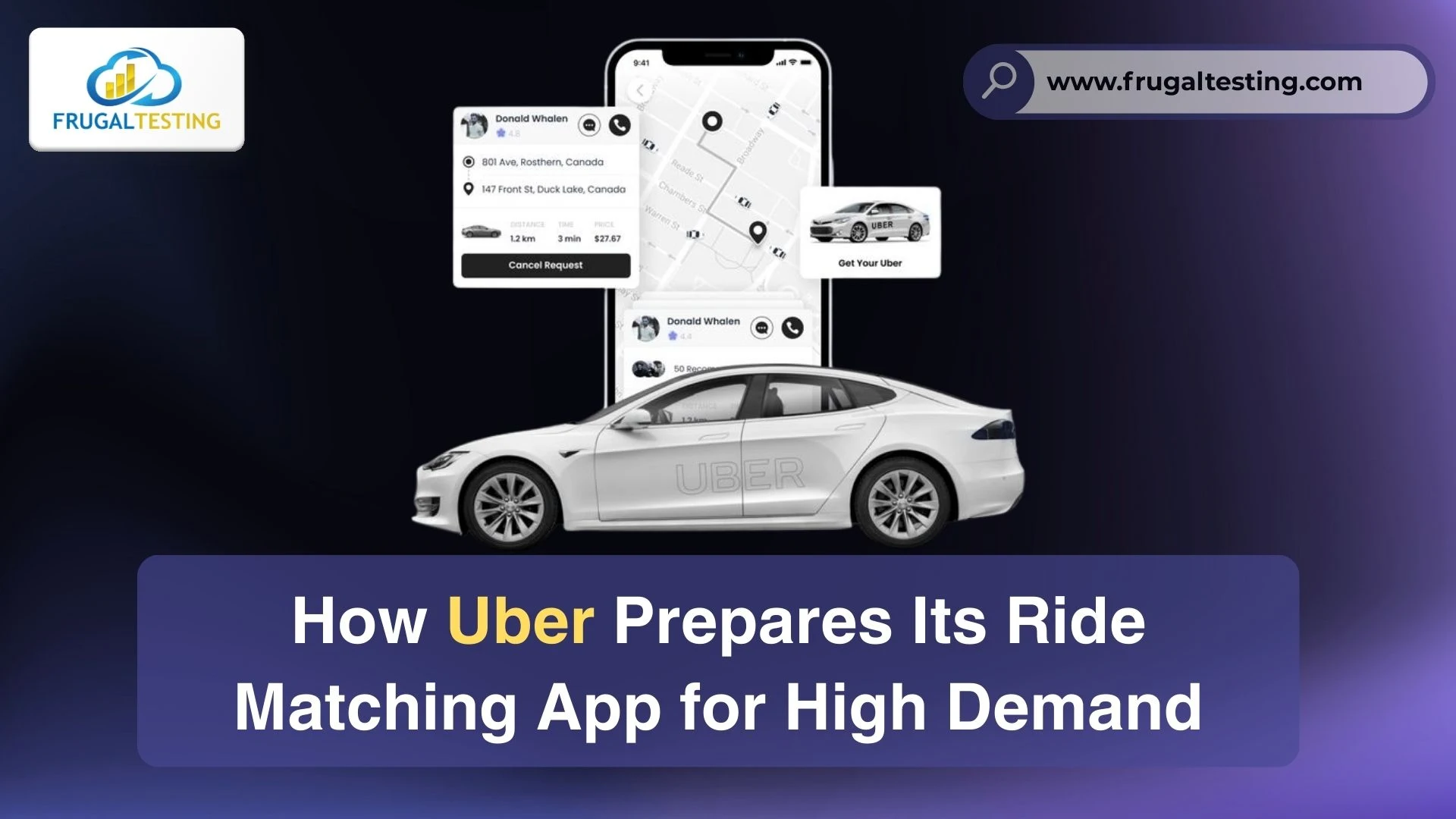
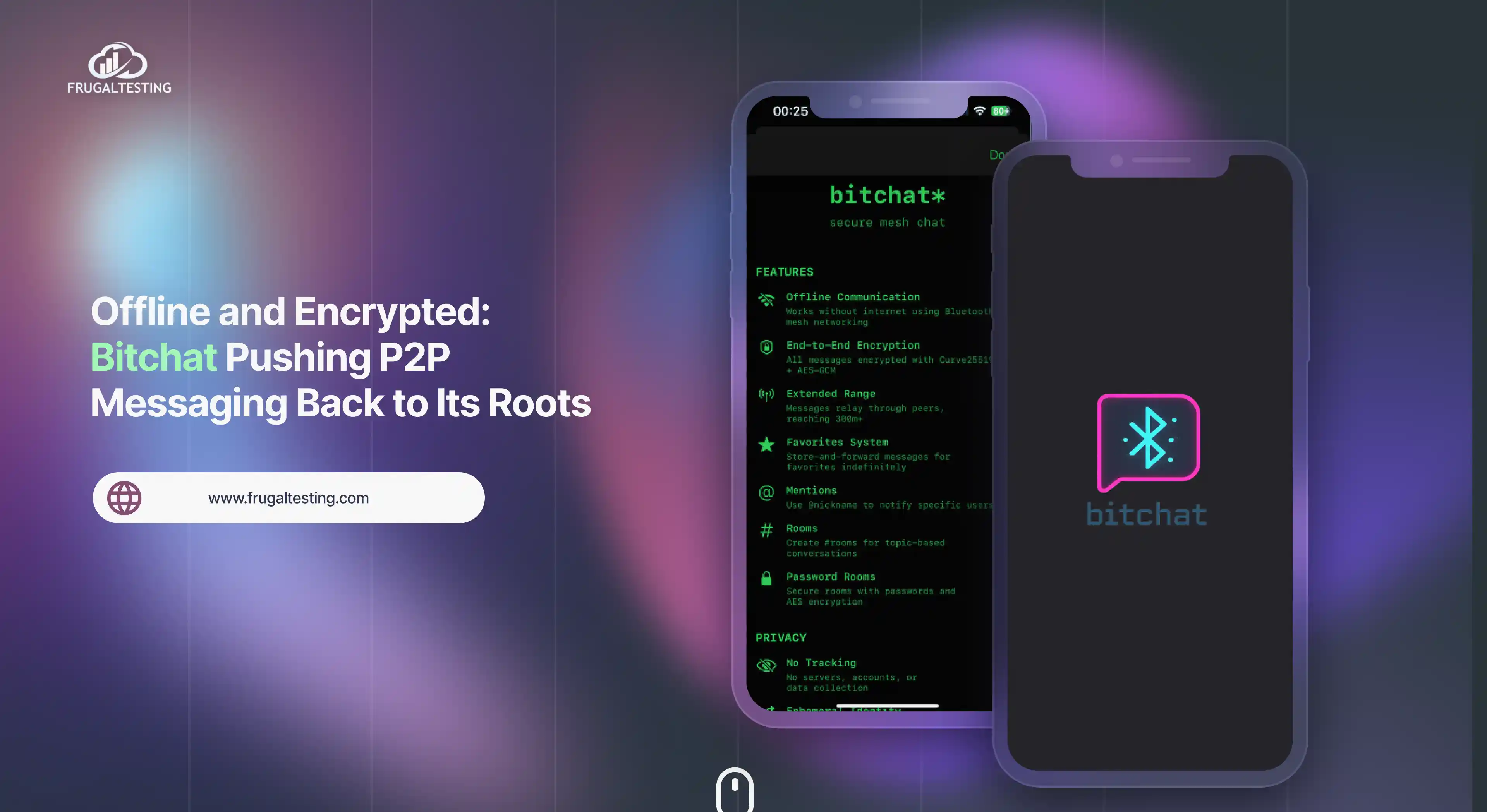
%201.webp)
